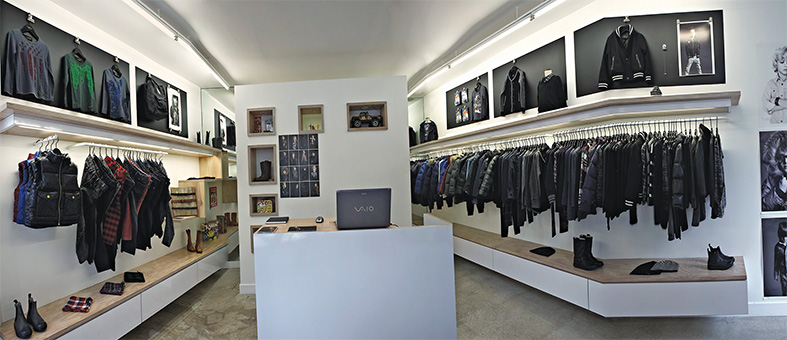The diverse economic profile with a huge population base has contributed significantly to the growth of the retail industry in the past. On the demand side, rising personal disposable income, growing urbanization, improvement in employment and the changing aspiration level of Indians have supported the consumerism and retail expansion in India. The sector has been witnessing rapid transformation from the unorganized to the organized, giving place to a modern retail format which gives unique shopping experience to the customer. In the last decade, the industry witnessed the emergence of e-retailing which gained huge acceptance amongst consumers and is witnessing healthy growth.
Here are some of the key dynamics that will continue to drive the growth trajectory of the rapidly evolving retail sector in FY16.
The expected pick-up in domestic GDP growth during FY16 augurs well for the retail industry. The projected improvement in economic activity, given improved policy environment and falling inflation, is likely to provide the required impetus to the retail sector in the coming years. Further, the expected moderation in interest rates is likely to support consumption of different consumer products.
Further, growing internet penetration, coupled with constant adoption of high-end communication devices available with cheap data services, is building the future of the organized retail industry in India to steadily transform from the brick to click format, i.e., store-operated retailing to online retailing/e-tailing. Higher internet penetration and the convenience of purchasing products online are the most prominent factors driving the growth of India’s online retail market.
Efficient customer servicing facilities offered by retailers such as cash on delivery, good replacement policy and such other factors have boosted the trust and comfort of customers to opt for online shopping. Further, the growth of logistics and reverse logistics to ensure speedy, secure and safe delivery of precious and delicate items has been fuelling the growth of the online retail in India.
Retailers are to explore omni-channel retailing to remain competitive in retail industry. With rapid growth of social media, the industry participants are fearing rising penetration of disruptive technologies in the retail sector where retailers are exploring multi-channel sales format, including physical retail stores, online stores, television, mobile app stores and telephone sale. Consequently, retailers have entered into marketing arrangement with leading online and on air-retailing companies to sell their products. Online retailers have also launched their online mobile apps to extend their reach to customers.
With key demand for various consumer goods expected to remain buoyant, the retail sector requires substantial investment towards up- gradation of back-end infrastructure facilities to deal with various supply side challenges. These include investment in storage and warehousing, cold storage, technology-driven logistics arrangement and road infrastructure to improve supply chain infrastructure and therefore help in protecting retailers’ margins. Also, with growing penetration and competition in online retailing, there is growing need for ace delivery boys.
Key challenges
Amongst the positive factors that favour the growth of the organized retail industry, the dynamics of the industry are governed by overall economic growth which influences the income growth and customer’s propensity to spend on discretionary items.
Indian retail industry performance continued to be sluggish with subdued economic growth in the past few years. Thus, the industry faces downside risk of sluggish growth along with certain inherent challenges. Some of these include shortage of skilled manpower, high operating cost due to infrastructure bottlenecks related to road, power, and water, rigid regulations, and high rental cost.
With these challenges, India slipped to the 20th rank in the Global Retail Development Index (GRDI) 2014 among the top 30 developing countries from the 14th position in 2013.
Inadequate supply chain infrastructure
In India 35-40 per cent of the total food products is wasted due to lack of adequate supply chain infrastructure. Also, with infrastructure bottlenecks and paucity of trained logistics personnel, India has one of the highest logistics costs. This results in high operating cost for the various industry participants in the retail sector.
With these challenges, India slipped to the 54th amongst 160 countries in the Logistics Performance Index (LPI) 2014 as against the 47th rank amongst 155 countries in 2013.
Under the current tax regime (State-level VAT), companies maintain their warehouses in every State which raises increases the inventory, maintenance and infrastructure costs. The likely introduction of GST would simplify the tax structure and is expected to have a favorable impact on the logistics services sector as well as on the retail industry. Buts its implementation has been delayed in every successive year and is now announced to be implemented on April 1, 2016. Consequently, the retail sector will continue to deal with the anomalies of the differential taxation structure in the current fiscal.
FDI in retail
The Government introduced 100 per cent FDI in single-brand retailing and 51 per cent in multi-brand retailing in September 2012. However, the decision to introduce 51 per cent FDI in multi-brand retailing faced huge resistance from a majority of States and till date has won the support of less than half of the 28 States. As against the likely reversal of the FDI policy with the formation of the new Government, the Ministry of Textiles now favours FDI in multi-brand retail under the automatic route but only in Indian apparel brands.
Currently, the policy allows for FDI investment only in foreign brand and retail operated by international entity. In the absence of clarity on FDI policy, many foreign investors are holding back their investment plans and looking for an alternative opportunity.
Currently, there are no well-defined, clear rules pertaining to e-commerce. As a result, the industry is being split by channels of trade. Retail can at most be segregated by categories of products and services traded rather than by channels or brands. The industry has been seeking modifications on this for a substantial time period.
